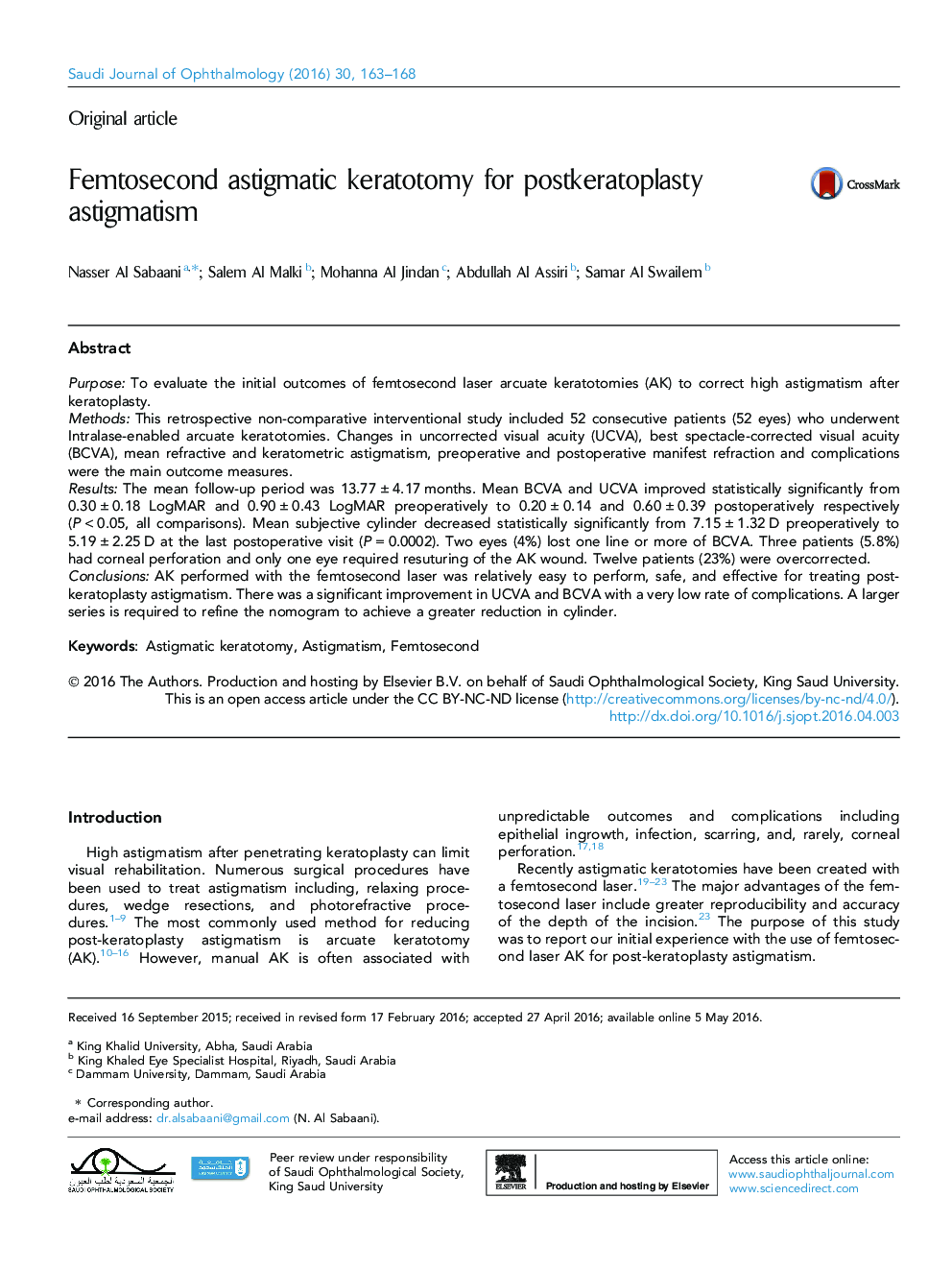| Article ID | Journal | Published Year | Pages | File Type |
|---|---|---|---|---|
| 2700577 | Saudi Journal of Ophthalmology | 2016 | 6 Pages |
PurposeTo evaluate the initial outcomes of femtosecond laser arcuate keratotomies (AK) to correct high astigmatism after keratoplasty.MethodsThis retrospective non-comparative interventional study included 52 consecutive patients (52 eyes) who underwent Intralase-enabled arcuate keratotomies. Changes in uncorrected visual acuity (UCVA), best spectacle-corrected visual acuity (BCVA), mean refractive and keratometric astigmatism, preoperative and postoperative manifest refraction and complications were the main outcome measures.ResultsThe mean follow-up period was 13.77 ± 4.17 months. Mean BCVA and UCVA improved statistically significantly from 0.30 ± 0.18 LogMAR and 0.90 ± 0.43 LogMAR preoperatively to 0.20 ± 0.14 and 0.60 ± 0.39 postoperatively respectively (P < 0.05, all comparisons). Mean subjective cylinder decreased statistically significantly from 7.15 ± 1.32 D preoperatively to 5.19 ± 2.25 D at the last postoperative visit (P = 0.0002). Two eyes (4%) lost one line or more of BCVA. Three patients (5.8%) had corneal perforation and only one eye required resuturing of the AK wound. Twelve patients (23%) were overcorrected.ConclusionsAK performed with the femtosecond laser was relatively easy to perform, safe, and effective for treating post-keratoplasty astigmatism. There was a significant improvement in UCVA and BCVA with a very low rate of complications. A larger series is required to refine the nomogram to achieve a greater reduction in cylinder.
